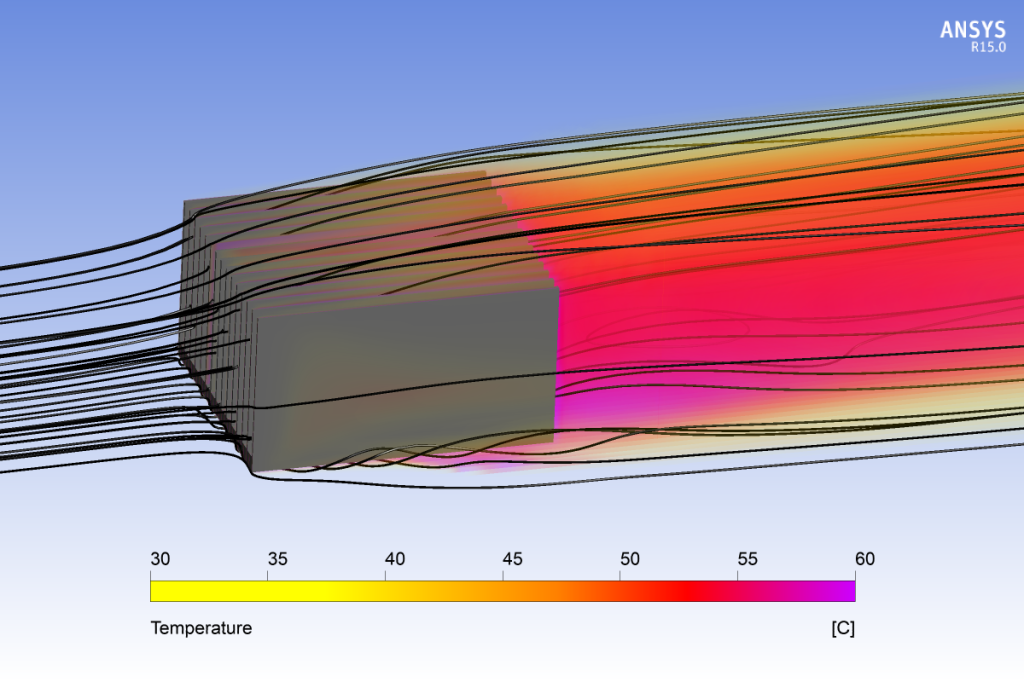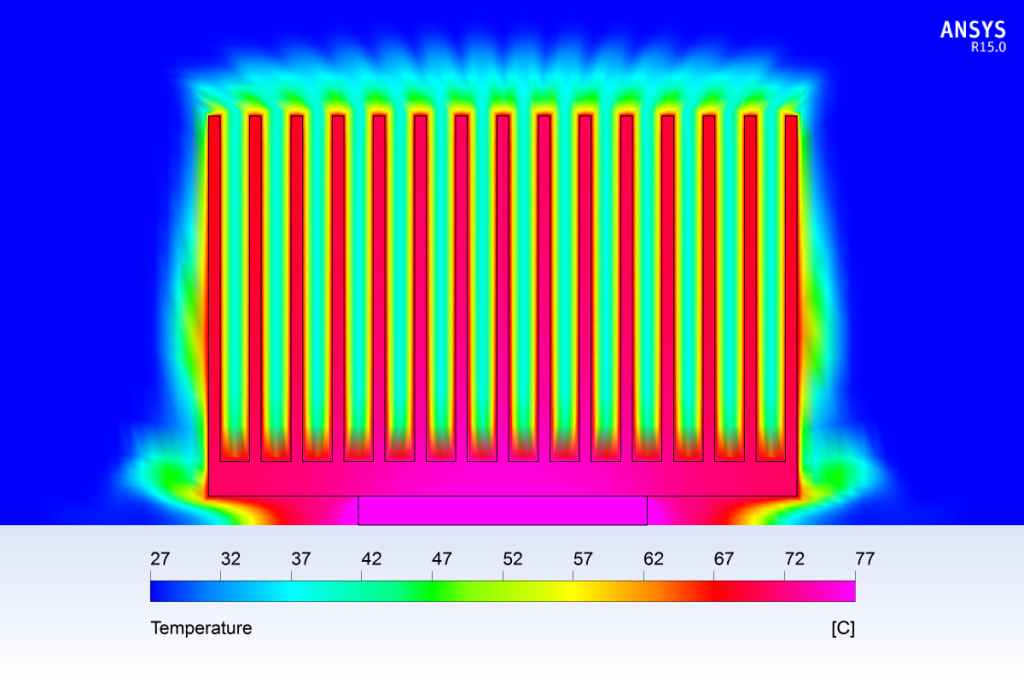For many simulations of real world engineering applications, the predictions of heat transfer properties are as important, if not more important, than the actual flow field. Such scenarios include simulations of heat exchangers, HVAC (Heating, Ventilation and Air Conditioning), combustion/burners, electronics cooling, and many more. In these applications, we are often interested in how heat moves through both the fluid and solid domains, and importantly the transfer of heat across the interface between adjacent domains.
ANSYS CFD is a leader in solving all three modes of heat transfer: convection, conduction and radiation. Deciding which physics to include is critical to setting up an efficient CFD model. For instance, radiation provides a computational overhead but it is a very important heat transfer mode for bodies with high temperatures which radiate to cooler adjacent bodies or to a lower ambient temperature (since radiative heat transfer scales with Temperature4).

This image shows heat being convected away from a finned heat exchanger. As indicated by the streamlines, air is flowing from left to right in the image. The size, shape and number of fins can be easily optimized using CFD and Design Optimization techniques
Conjugate Heat Transfer (CHT) is applicable whenever there are two adjacent domains and we wish to analyze the heat transfer between these domains. These domains can either be solid or fluid domains. One example is the forced or natural convective cooling of a heat-sink attached to active electronics components which generate heat.
As well as heat-transfer across solid-fluid domains, we can also resolve heat transfer across solid-solid domains and fluid-fluid domains. Solid-solid interfaces are used where two solid components are in contact with each other and there is heat flowing between the objects. Although a fluid-fluid CHT system may seem unphysical, it is a valid assumption in some cases, such as a co-flow heat-exchanger where two fluids are separated by a thin wall. In this case, it can be assumed that the heat-transfer across the dividing wall is calculated in the wall normal dimension only (without explicitly meshing the wall thickness), and there is negligible heat flow along the wall.
In all of the above instances, a thermal resistance can be applied to the interface in ANSYS CFD. Such resistances can be used to represent thermal coatings (often used in electronics applications) or badly mated surfaces between adjacent solids (to understand the tolerance of poorly designed connections).

This image shows a cross-section through the stream-normal plane of the above finned heat exchanger. Heat flows into the heat sink from the active electronics components on the base and is carried through the heat sink fins and into the surrounding air. The boundary layer is critical to this heat transfer and an appropriate near-wall mesh is needed.
For CHT simulations, it is critical to select appropriate boundary conditions that best represent the physical situation. ANSYS CFD provides a wide range of thermal boundary conditions, but also allows users to customise boundary conditions (using UDF’s or CCL Expressions) so that any heat transfer situation can be modeled.
One extremely important aspect of performing accurate CHT simulations is the wall adjacent mesh sizing, as accurately resolving the thermal boundary layer is crucial for producing reliable CHT results. To resolve the thermal boundary layer, an identical approach can used to when we are resolving the viscous boundary layer (for accurate flow separation, pressure drop, etc...), where we create high-aspect ratio prism or hexa elements stacked in the wall-normal direction (protruding into the fluid domain). Within the solid domain, however, there is no need to have such resolution (as there is no convection) so a uniform, coarser mesh can be used.
The use of Conjugate Heat Transfer simulation unlocks a range of simulations that can be performed using ANSYS CFD across industries including electronics, built environment and power generation. With proper training and knowledge, CHT simulations contribute an integral aspect of the Simulation-Driven Product Development approach that is being embraced by innovative designers and manufacturers worldwide. Contact LEAP today if you have an engineering problem where heat transfer is an issue.






